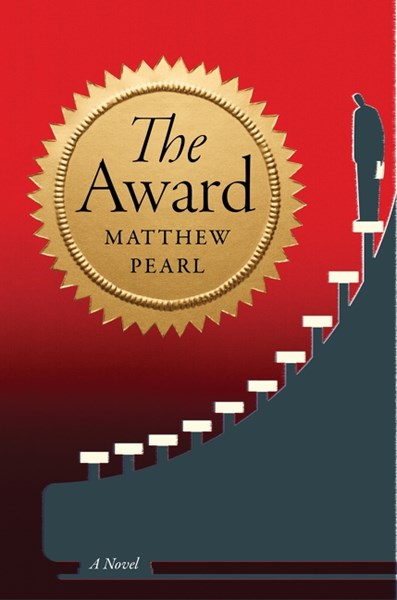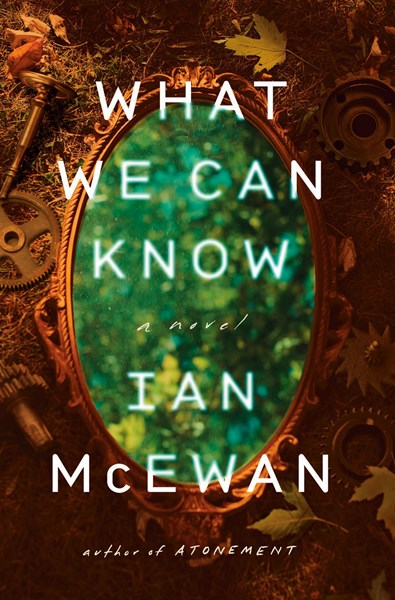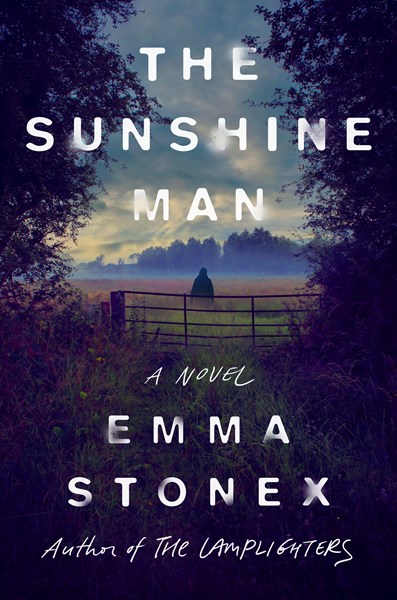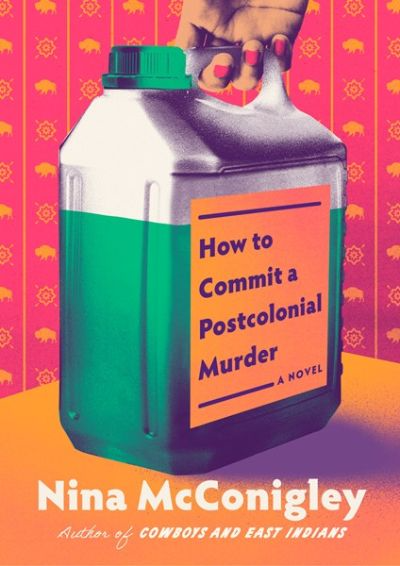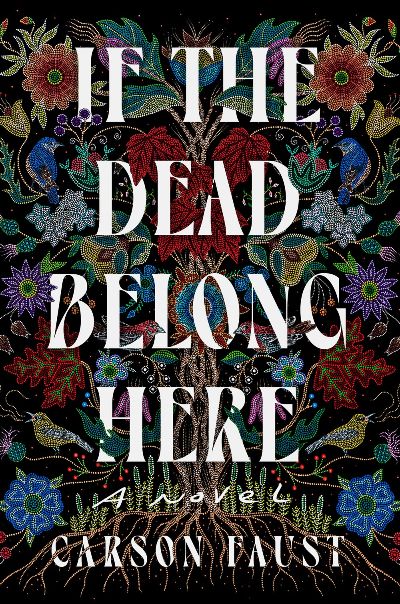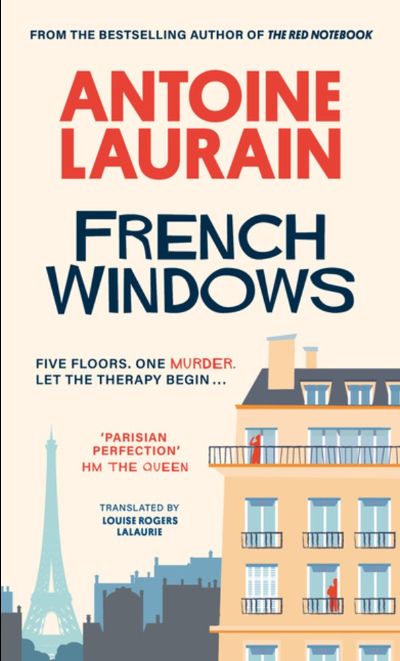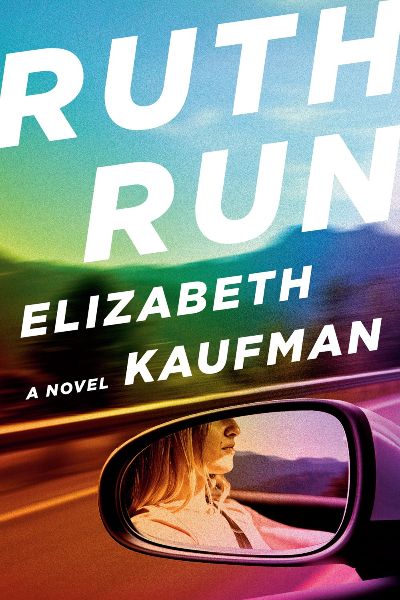Let’s start by acknowledging that this book has been panned elsewhere—but that’s because it must be approached from the right angle. Readers expecting a straight murder mystery, à la Hannah’s Agatha Christie novels, won’t find that here (although Christie’s work does play a role). What to expect is a zany cozy-like caper that shines a light on feuding women in an upscale English village. Swaffham Tilney is the kind of place where book club disagreements and a feud between neighbors over a pet dog solve the too-much-time-on-their-hands problem. Sally Lambert is the owner of the dog in question, Champ (full name Champ Cuthbert Lambert), a pet that she considers her child and obsesses over more than even the worst helicopter parent. She’s horrified when Champ is accused of biting a neighbor’s daughter, Tess, culminating in the Lambert clan, furry and human, going on the run lest Champ is put on doggy death row. The instigator on the other side is Lesley Gavey, Tess’s mother, who’s hysterical over the bite and wants justice. Since there are teens in both families, social media plays a role in the chaos and soon #InnocentChamp fervor swamps the internet. In the end, the story returns to a more sensible world, but the wild ride that is Lambert vs. Gavey is wacky fun while it lasts. After enjoying this yourself, give it to your friends who call themselves “dog moms” and don’t look back.
Literary
It doesn’t take long for van de Sandt’s plot and writing to grip readers’ attention in this debut. Two timelines interweave around the circumstances of a single dinner party, set to celebrate the launch of Franca’s fiancé, Andrew’s, latest project, a canon of sorts inspired by time capsules. Franca once aspired to have a career, but it is clear that Andrew prefers a more domestic arrangement for her. Her father died while she was quite young, and her mother is distant, so her life with Andrew feels safe, initially. In his discussion with Franca over what should be served at the dinner party, Andrew throws off a mean vibe, even insisting that Franca get fresh rabbit to prepare, despite knowing she is a vegetarian. Kitchen disasters up the tension, and when one unexpected guest arrives, a friend of hers from Utrecht, the wrenching details of Franca’s relationship with Andrew are slowly revealed as the timeline shifts forward and back. Claustrophobic and thrilling at the same time, the book allows readers to follow Franca’s unwinding as she seeks revenge against the man who says he loves her, when he just wants to own her, body and soul. Readers will feel every bit of Franca’s female rage as she attempts to extricate herself from her untenable situation. At a time when “tradwife” movements are on the rise, which prioritize homemaking and caring for the husband, trusting him to provide and protect, this story is particularly relevant.
Full-on brilliant, this sojourn into the groves of academe evolves into something totally dark and absolutely compelling. MFA grad David Trent is hanging around Cambridge cafes, reworking his novel for the umpteenth time, and lying to his fiance. It doesn’t help that his upstairs neighbor is Silas Hale, a renowned author who poses as a mentor when in fact he is nothing less than a monster who takes delight in torturing emerging authors (quite literally. In one of the funniest/most horrifying scenes, he refuses to supply David with any heat, despite it being winter in Boston.) But when David wins an award for his debut novel, everything changes, and even Silas is forced into welcoming his neighbor into the literary scene, albeit begrudgingly. From there, the novel, and David’s career, really take off. But enough from me. I refuse to let any of this devilishly satiric plot escape. Why take the fun away from other readers? Comparisons to Donna Tartt, Jean Hanff Korelitz, and Patricia Highsmith are inevitable. On my list of the top ten Best Books of 2025, this novel needs to be shared with a whole range of readers and enjoyed in book groups. They’ll be grateful.
Be happy, be academically successful, do the right thing—in McEwan’s tale of the mystery surrounding a lost poem, you can only have two. The poem, and those surrounding it, have two lives here. The second part of the book takes place in 2014 at the time of the poem’s creation and involves narcissistic poet Francis Blundy; his wife, Vivien; and their circle. The first part of the book is set in 2119, when humanity has been beset by global warming and nuclear wars. The diminished world is fixated on the (perceived) better past, part of that obsession being Blundy’s poem, which has a place in the culture as the pinnacle of romance and dedication. McEwan spins the reader in circles, showing us the same events first from afar and then from different points of view in the same time period. This creates a sense that what we can know is in fact very little, and maybe that’s for the best. As usual in McEwan’s books, especially his ultra-tense On Chesil Beach, the characters move in such agonizing situations that the book must be set aside at times—but the language, especially concerning characters’ self-regard, whips the reader back in (“…it was no longer me at all. What remained was not even a woman but a poetic convention, the shadow of a woman on the cave walls of a man’s imagination”). A must for McEwan fans; and librarians, take note: the creation and maintenance of an archive has a role here.
It’s a big day for both Bridget Keller and her old family friend Jimmy Maguire. Jimmy’s being released from notorious English prison Wandsworth, having served decades for the murder of his childhood friend Providence. And Bridget, Providence’s older sister, is on her way to the prison gate to meet Jimmy and kill him. But things aren’t quite right for the attack, so Bridget puts it off…and puts it off…while she tails Jimmy as he visits old haunts, planning to kill him at every stop. As we journey with the ill-fated pair, readers look back at Bridget and Jimmy’s childhoods. Both have been abandoned by their mothers, Bridget physically when her mother took off, Jimmy emotionally as he survives life with his alcoholic mother; “the mister,” an abusive man whom Jimmy just KNOWS isn’t his father; and his small-time-criminal brothers. Nobody expects good from a Maguire. But as readers come to know Jimmy from his friendships, efforts to escape a life of crime, and sometimes-sparkling inner thoughts, it becomes harder to view him as just a criminal. Solid twists add to the emotional uncertainty to create a thought-provoking look at intersecting tough lives and longings for love.
“The Ayyars dipped into our lives like a tea bag into the whiteness of a porcelain cup. They muddied the water and made our house feel small….” In the summer of 1986, tween narrator Georgie Ayyar Creel; her sister, Agatha Krishna; and their amma (mother) welcome newly arrived relatives from India to their cramped home in rural Wyoming. Moving into Agatha Krishna’s bedroom are Vinny Uncle, Amma’s beloved but useless younger brother, whom she has not seen in 14 years since marrying geologist Richard Creel; Auntie Devi, Vinny’s bossy wife; and their son, Narayan. Tensions quickly arise, and so does the sexual abuse when their uncle targets Agatha and then Georgie: “Vinny Uncle made us shadow people.” Forced into silence by their abuser, the sisters decide he must die. The accidental death of a cat provides the murder weapon and sets the siblings’ deadly plot into motion. This highly original debut novel by the author of the award-winning short story collection Cowboys and East Indians is a darkly funny coming-of-age tale with a touch of murder and a haunting twist. Celebrating girlhood and sisterhood in the 1980s, it’s also a touching portrait of Indian-American teens, caught between cultures, in the American West.
Between 1830 and 1850, the U.S. government’s forced displacement known as the Trail of Tears removed thousands of Native Americans from their ancestral lands in the Southeastern United States. But according to Native folklore, some Indigenous people evaded the Removal, sheltered by supernatural Little People. Faust’s atmospheric debut focuses on a family descended from those survivors and the generational trauma they have endured. When six-year-old Laurel Taylor vanishes from her Wisconsin home early one morning in 1996, her devastated mother, Ayita, believes her abusive ex-husband Barron kidnapped their daughter, even though Barron had abandoned the family before Ayita realized she was pregnant. But as weeks pass by and Laurel remains missing, Nadine, her older sister, begins experiencing nightmares and hearing whispers, especially in the tree house where Laurel always played. Have the Little People taken Lauren or are other family ghosts responsible? To find answers, Nadine travels with her Aunt Rosebud to South Carolina, where her fractured family has deep roots. Faust, an enrolled member of the Edisto Natchez-Kusso Tribe of South Carolina, draws on his family history and Indigenous mythology to weave a haunting tale of loss and redemption that may remind some readers of Keith Donohue’s The Stolen Child with a touch of Poltergeist.
A delightful, quirky, and comic foray into Parisian life that’s a clear homage to Hitchcock’s Rear Window (and the even earlier short story of the same name by Cornell Woolrich). Here, the dynamics include Nathalia Guitry, a successful photographer who, having witnessed a murder while taking pictures, is unable to work. She seeks help from Doctor Faber, who assigns her a creative task: to record the lives of the people in the apartment building across from her. Nathalia sends the stories to Doctor Faber via mail (she claims she can’t bear to watch him read them), vignettes that many readers will find to be the most fascinating parts of the novel. Eccentricity abounds as we encounter a lyricist, a life coach, and a well-known cartoonist; in its own surprising way, the Parisian building is reminiscent of Whitter, Alaska, where all residents live in one building, keeping a watchful eye on one another. Even the doctor has his own odd interests, from smoking to collecting keys. But what about that murder? Readers will appreciate racing through this brief novel to get to the other—very rewarding—side.
Kudos to Jurczyk (The Department of Rare Books and Special Collections, That Night in the Library) for providing a closed circle mystery that avoids the tropes of the subgenre while still offering some charming nods to closed trains of the past. Here, bestselling author Agatha (albeit suffering a bit from writer’s block) is sent off by her husband on a roundtrip from Toronto to Montreal for the sole purpose of finishing her new novel. With a first class ticket in hand, and only a few residents in her car, Agatha is slightly optimistic, imagining the train as a writers’ retreat and with the hope of turning out a few pages. But then she discovers a woman lurking about the train—someone, it turns out, whom she knows all too well—who believes that Agatha stole her success. As the snow thickens, the train slides to a halt somewhere in the Canadian wilderness, and then the passengers discover the horrifying news: one of their own has died. It’s brilliant how much Jurczyk packs into the book, moving back and forth between the present and Agatha’s personal history, while always sustaining a steady pace. But by the time the 6:40 makes it to the Montreal area hours later, it’s pure carnage.
Ruth has an unconventional way of making money, and her method of robbing banks through a code in a hacked chip has finally caught up with her in Kaufman’s debut thriller. Taking cash in small amounts from transactions has made her a very rich cybercriminal. When alarms signal she’s been discovered, she grabs her accomplice, and they take off. A government agent named Mike has been watching her for some time and knows everything about Ruth since he feels he launched her career. Mike has planted tracking devices in her home, car, and a bag that never leaves her side, so he knows her every move. When his superiors want her eliminated since her bug is inside the government’s network, Mike agrees to help. However, he seems to have feelings for the woman he considers his protégé, so what is his objective? When Ruth realizes that the authorities are close and her usual tricks won’t be enough, she must improvise. But even though she is elusive and clever, her methods might put her in even more danger than she’s in from the law. Kaufman has created a compelling and complex character in Ruth, and watching her outwit and coordinate her surroundings to stay alive while being in control will endear her to readers. The motivations behind the people after this protagonist, and her inability to trust those she enlists for help, keep the paranoia above a level ten. Hopefully this terrific debut will launch a series featuring Ruth and her adventures.



